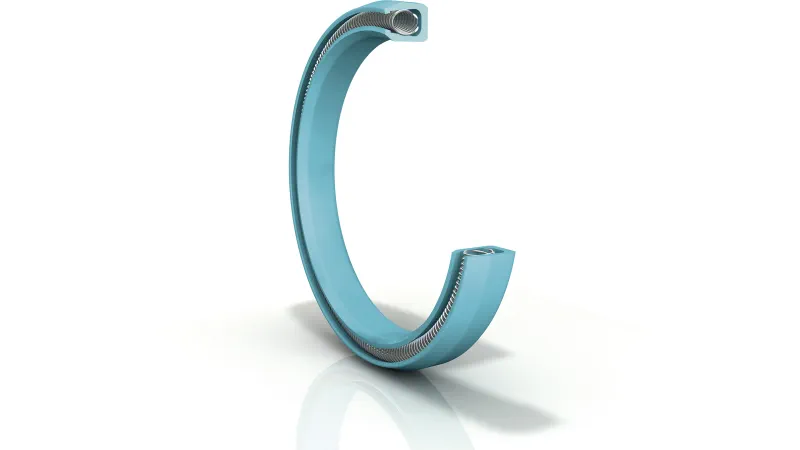To improve seal life, the frictional resistance of the main seal needs to be relatively low, which requires an oil film on the sliding surface of the main seal. This range of coefficients of friction in which the oil film is formed is also known in lubrication theory as fluid lubrication. In this range, the working surface of the seal is in contact with the cylinder or rod by means of an oil film, when the seal has a long service life without wear, even when relative motion occurs. For this reason, it is important to design for a uniform contact pressure distribution so that an optimum oil film can be generated on the sliding surface. This is true not only for combination seals but for all hydraulic seals.
The design principles for combination seals include the following:
① The overall compression rate of the combination seal is appropriately valued according to the material properties. The gap between the product and the groove in the free state is left, but not too large to avoid shaking in the groove.
②Sealing ring:Main seal. Its thickness can not be too thick, generally in 2 ~ 5mm, by the specific sealing materials; its width can not be too wide, the effective sealing band width exceeds a certain value can be considered to add lubrication groove, to avoid dry friction and crawling phenomenon.
③Elastomer: the role is to continuously provide support to ensure the sealing effect of the combination seal. According to the material hardness, elastic modulus, etc. to take the appropriate compression rate, its width and the width of the groove to leave a suitable gap between. Ensure that the elastomer has enough space to walk after extrusion.
④ Retaining ring:The role is to ensure the stability of the position of the elastomer after fitting into the groove, so as to improve the overall stability of the sealing ring. Combined with the seal ring and elastomer overall design.
⑤Guiding ring:The role is to guide and ensure smooth and stable operation of the piston in the cylinder and to prevent damage to the cylinder steel surface by contact between the piston steel and the cylinder steel barrel. The structure is generally standard GFA /GST.
Post time: Jun-20-2023







